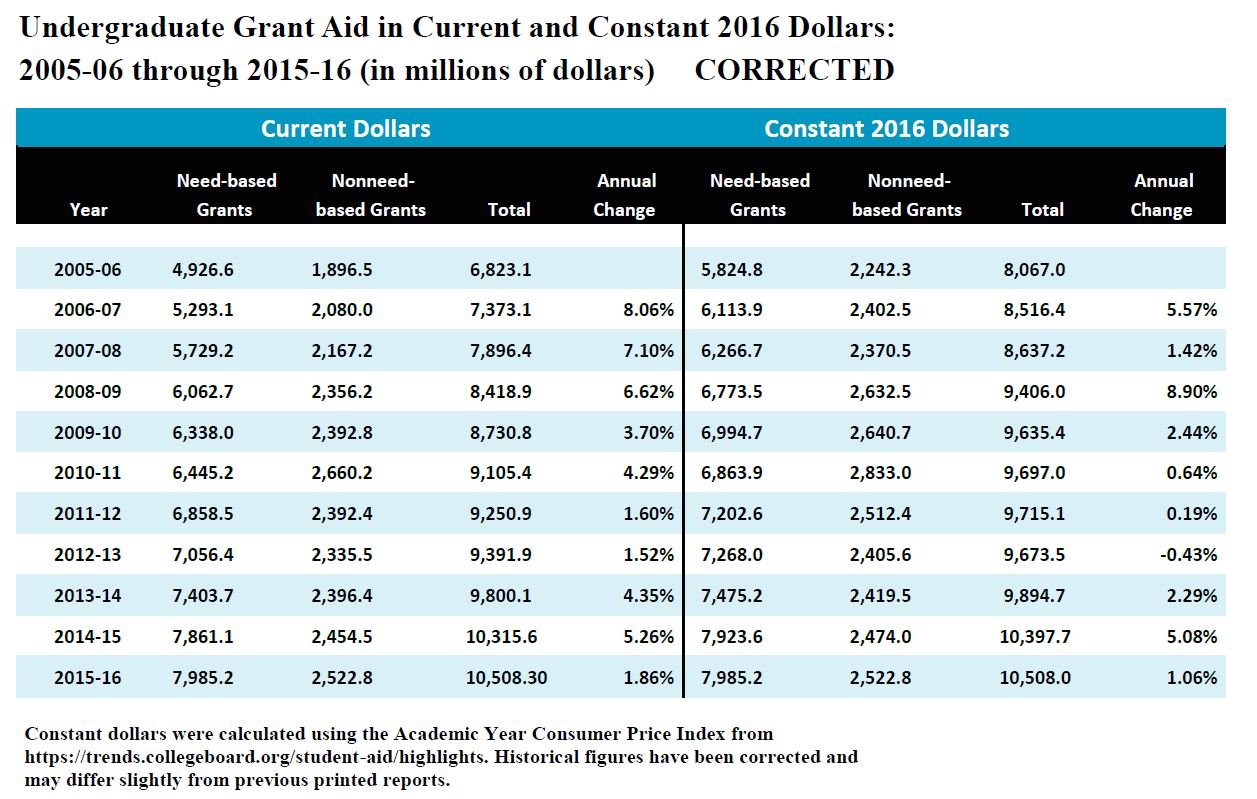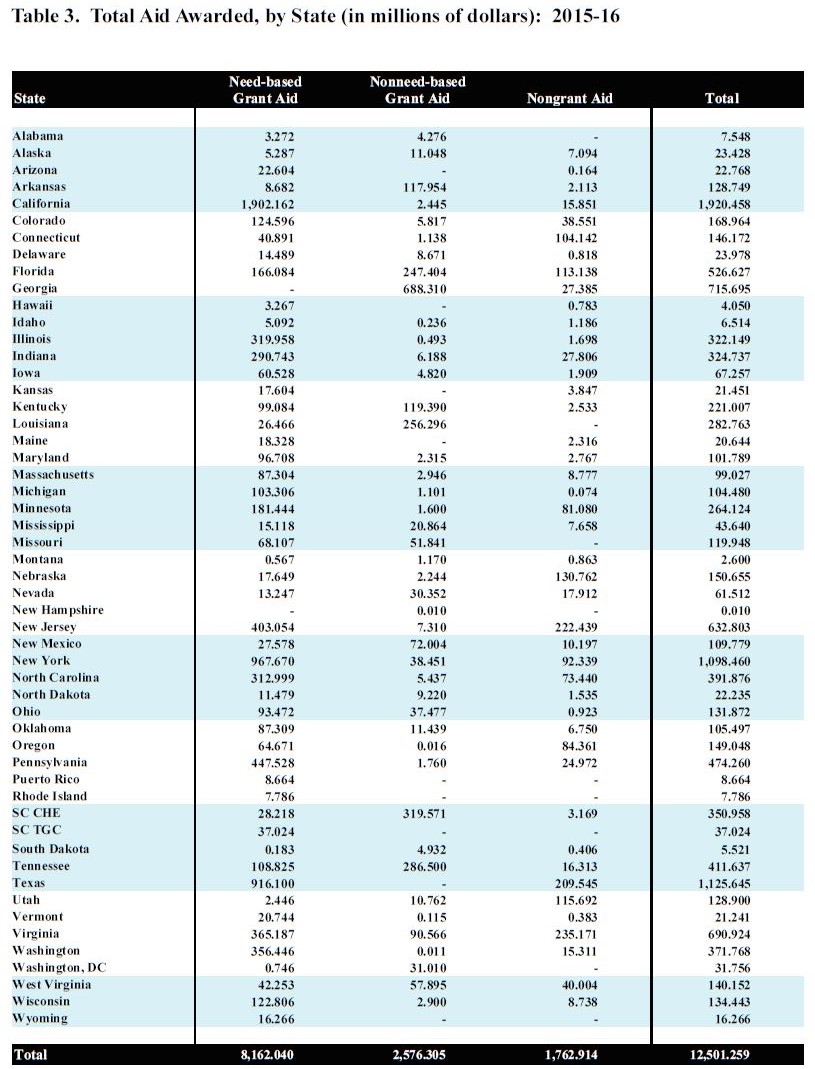You have /5 articles left.
Sign up for a free account or log in.

NASSGAP
Levels of state-funded student financial aid changed remarkably little from 2014-15 to 2015-16, according to a new survey released today.
State-funded student financial aid totaled about $12.5 billion across the country, according to an annual survey from the National Association of State Student Grant and Aid Programs. Aid totals increased by less than 1 percent from $12.4 billion in 2014-15 on a nominal basis and were essentially even after adjusting for inflation.
Growth in aid slowed from the previous year. From 2013-14 to 2014-15, NASSGAP measured year-over-year growth at 6 percent nominally and 5.8 percent after factoring in inflation.
“It’s sort of a steady-state situation,” said Frank Ballmann, director of NASSGAP’s Washington office.
Most state aid was awarded in the form of grants -- states made 4.1 million grant awards worth $10.7 billion in 2015-16. Grants accounted for 86 percent of all state aid awarded.
The $10.7 billion in grants represents an increase of 2.2 percent from 2014-15. That suggests some states are strengthening their programs, according to Ballmann.
About two-thirds of grant money awarded in 2015-16, 76 percent, was need based, with the remaining amount being non-need based. The breakdown between need-based and non-need-based aid was virtually unchanged from the previous year.
Need-based aid is considered the most specifically tailored form of financial aid for helping low- and middle-income families pay for college. The theory is that need-based aid can encourage students to attend college who might otherwise not consider postsecondary education, or who might not be able to pay for it without assistance.
Non-need-based aid, sometimes referred to as merit aid, is often seen as targeting students from wealthier families who will be able to pay for college -- and will likely plan on doing so -- regardless of whether they receive aid. It is also considered a way to attract high-achieving students -- it more typically changes where someone will go to college than whether they do.
The percentage of grant money awarded as need-based aid had been on an upward trend in previous years before leveling out in recent data. Various factors are likely affecting the statistic in different ways, according to Ballmann.
“The economy is stronger, so ultimately people qualify for less need-based aid,” he said. “FAFSA filing rates being higher means more people are paying attention to the possibility of going to college.”
Another factor that could be depressing state aid is demographic downturns in some high-population states, which could be putting downward pressure on the number of enrolled students.
Nongrant student aid came to about $1.7 billion, down from $1.9 billion in the previous year. Nongrant student aid includes loans, loan assumptions, conditional grants, work-study and tuition waivers. Loans and tuition waivers represented 72 percent of nongrant awards.
Since the latest NASSGAP survey tallies data from 2015-16, it does not show the effects of large-scale policy changes going into effect in later years, like students’ ability to submit the Free Application for Federal Student Aid earlier in the college admissions cycle. The survey does include funding under the highly watched Tennessee Promise free community college program.
Undergraduate need-based grant aid rose by less than 2 percent, to about $8 billion, in 2015-16. Just eight states awarded $5.5 billion, or 70 percent, of all undergraduate need-based grant aid. Those states were California, Illinois, New Jersey, New York, North Carolina, Pennsylvania, Texas and Washington.
Still, most states said they had undergraduate aid programs with a need component. Only two states, Georgia and New Hampshire, reported no need-based aid programs. Meanwhile, 26 states listed undergraduate programs making only non-need-based awards.
Nearly half of all aid awarded to undergraduates, 46.1 percent, came under exclusively need-based programs. Exclusively non-need-based programs awarded 17.6 percent of aid awarded to undergraduates. The remaining 36.3 percent of aid awarded fell under other programs and programs with both need-based and non-need-based components.
Four southern states -- Georgia, Louisiana, South Carolina and Tennessee -- awarded the most grant aid per capita. Three of those states -- Georgia, South Carolina and Tennessee -- had the highest ratios of undergraduate grant dollars versus undergraduate full-time equivalent enrollment. All of those states skew heavily toward non-need-based aid.
The highest ratios of total expenditures for state-funded grants versus state fiscal support for higher education were recorded in Louisiana, Pennsylvania, South Carolina, Tennessee and Virginia.
The following is a breakdown of total aid awarded by state and type.







